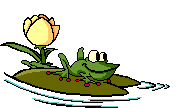
Chicken Lore
Chickens have been around for centuries. Chickens bathe every day, rustling around in the dry, fine dirt until they have formed a shallow basin. Then they set in the basin, fluff the dirt all around into their chest and feathers, flinging it into the air.
This cleans them of excess oils and bothersome bugs. It is quite comical to see four to seven chickens 'dust bathing' at the same time. Roosters love the voices they were born with. Ever since biblical days, they have been crowing in the middle of the night. Our five roosters crow at three in the morning, four in the morning and six in the morning!
Sometimes they get a hankering and crow during the day! Often two or three roosters will have crowing contests and they all crow at the same time! It's not just for mornings, any more! What a ruckus! They are as loud as a frogs' chorus on summer evenings!

Chicken Types
There are about forty chickens and roosters living at Dunn Farm. They are of varied species, all hand raised as baby chicks. Each spring Tim selects new baby chicks to raise, trying the many different breeds available.
The Buff Orpington, Black Australorp, and our Great White turkey, Lizzie, live in the main chicken coop. Black Australorp were developed in Australia from Black Orpington stock. It is a smaller bird with a trimmer look. They have a deep, green sheen on their black feathers, and are very active. They are great egg producers.
The Buff Orpington was developed in England during the 1880's and brought to America in the 1890's. Their feathers are loose, making them appear heavier. This helps them to endure cold weather. They exist in solid colors only and the hens make great mothers. Their chicks are not aggressive.
Araucana was originally discovered in South America, and the roosters have the most beautiful feathers, turquoise, rich brown, white, black, and shimmering blue (see photo above left). The hens of the species are pretty too, but they don't flash the incredible colors that the roosters do.
The hens are more iridescent as the light hits their colors. They are a medium size breed and are good layers of color eggs. They start laying around 6 months of age. The little Bantams have tufts of fuzzy feathers at their ankles, and are very good mothers, even to the point of adopting neglected eggs.
That is how one of our little mother Banties hatched three baby Araucanas! A gray fox had taken the Araucana mother.)
Barred Rock chickens are black and white speckled and a heavier breed. They are also excellent layers of brown eggs. They are a favorite.